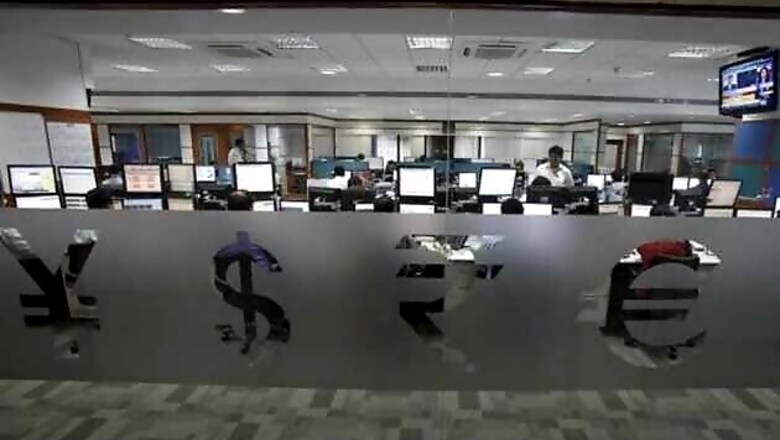
views
Mumbai: Chastened by a tumble in the rupee in 2013 at the prospect of tighter US monetary policy, India has built up record foreign exchange reserves of nearly $340 billion to insulate the economy from capital flight as the United States prepares to lift interest rates.
Reserve Bank of India Governor Raghuram Rajan has long warned of the risk to emerging economies when the US Federal Reserve makes the first rise in its zero percent interest rates since the 2008 financial crisis.
He has also been actively buying dollars, helped by a net inflow of $54 billion of foreign money since the start of 2014, which has driven shares to record highs and pushed bond yields sharply lower.
The central bank's intervention has seen reserves rise by about a quarter since the end of 2013 to $338 billion and headed off a sharp appreciation in the rupee. That gives him the firepower to limit a slide in the rupee and any dislocation in domestic markets if foreign money rushes out.
"As of now, we have accumulated enough reserves," said a policy maker familiar with the RBI's thinking.
"The Governor has created that space to face a US rate hike," he added. "Adding to reserves was an objective last year. This year it is more to contain volatility."
Those preparations look set to be tested in the coming months after the Fed removed a reference to being "patient" on interest rates from its policy statement on Wednesday, paving the way for a hike within months, though it also signalled it was in no rush to push borrowing costs higher.
In 2013, when he was an economic adviser to the Indian finance ministry, Rajan witnessed firsthand the perils of being unprepared, when concerns about the Fed scaling back its monetary stimulus sparked a "taper tantrum" that roiled emerging markets, saddling India with its worst market turmoil in more than two decades.
India's central bank and finance ministry were seen by markets as unprepared and hesitant in their initial reaction.
Rajan, formerly chief economist at the International Monetary Fund, was credited with a key role in rescuing India from that crisis with measures that helped stem foreign selling.
Rajan said on Wednesday India now had "comfortable" FX reserves and its current account deficit was under control.
India shining
India has seen a resurgence in investor popularity since the election of a reform-minded government under Prime Minister Narendra Modi, helped by improving economic fundamentals and the RBI's efforts to curb inflation.
It also imposed curbs on gold imports in 2013, a measure that, combined with the slump in crude prices, helped substantially narrow the country's current account deficit.
India has subsequently attracted more foreign capital than the "Fragile Five" countries to which it is often compared, but the RBI considers such inflows a double-edged sword, since they leave it at the whim of global investors.
India saw net foreign investments of nearly $20 billion in 2007, ahead of the global financial crisis, only to see investors pull out $9.4 billion in 2016.
And in 2013, $8 billion flowed out of its debt markets, sending the rupee to a record low of 68.85 per dollar in August.
As a result, Rajan has pushed hard to build up currency reserves, which had fallen as low as $274.8 billion in September 2013, enough to account for just under seven months of imports, the lowest import cover since 1996.
With the rupee about 10 per cent above the 2013 low, the governor can keep adding to those reserves by buying dollars, analysts say.
"The RBI enjoys pretty decent headroom in terms of the intervention they can do," said Siddhartha Sanyal, chief India economist for Barclays.

















Comments
0 comment